New Study: The State Of The American Worker, March 13-15, 2020
How has the outbreak of the Coronavirus shifted the American workforce? CUMULUS MEDIA | Westwood One commissioned Ipsos to conduct a national study to understand how American work habits have been altered. The study took place over the weekend of March 13-15, 2020.
Here are the key findings:
During the week of March 9-13, 11% of Americans who normally work outside the home worked from home; 19% of those in the Northeast worked from home
Of those who normally work outside the home, nearly twice as many in the Northeast worked from home in the past week. Only 7% of those who normally work outside the home in the Midwest stayed home.
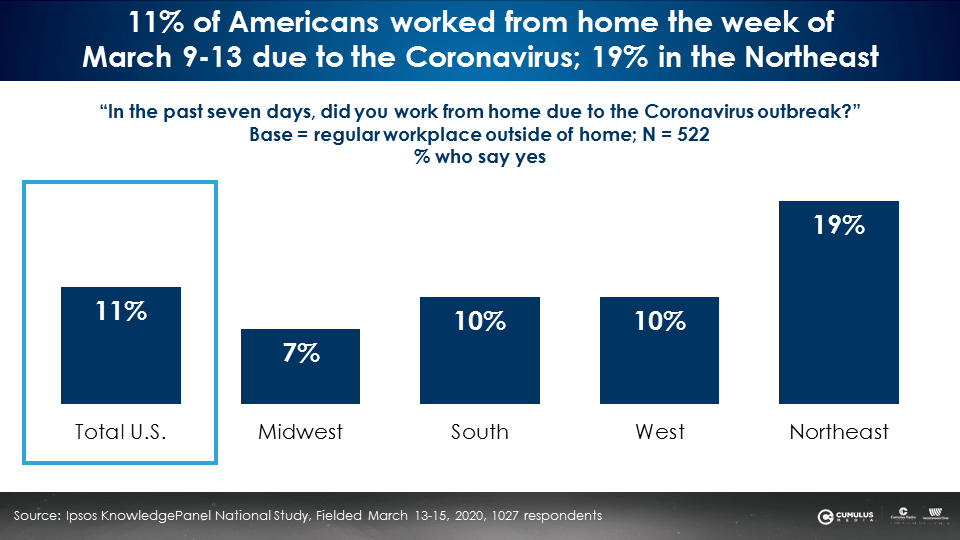
For the week of March 16-20, 77% of those who work outside of the home say they will go to work; 23% will stay home the week of March 16-20, 2020
36% in the Northeast say they will work from home. In the rest of the country, about 20% of those who normally work outside the home say they will work from home the week of March 16-20.
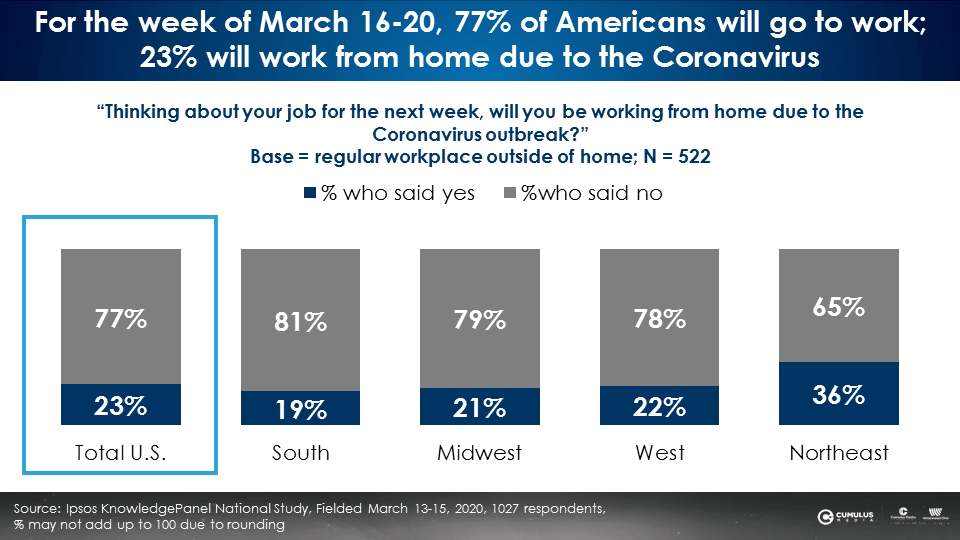
Income is a factor contributing to whether workers will work from home or travel to a workplace
26% of workers who make over $50,000 say they will work from home the week of March 16-20. Only 14% of those making less than $50,000 will work from home the week of March 16-20, as many of those positions may require the presence of the employee.
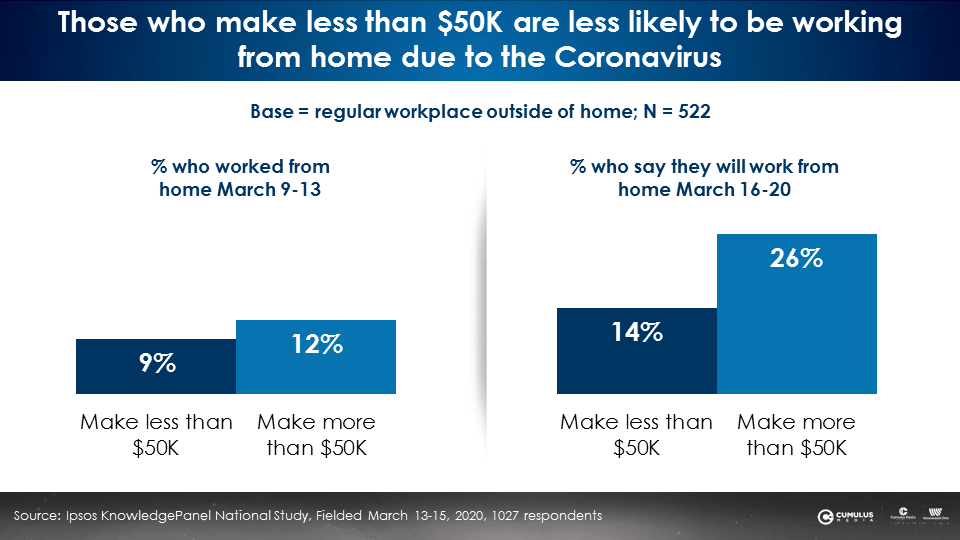
American commuters are avoiding public transportation
55% of those who normally use public transportation are already, or planning on, using it less. Those who use a car or truck to get to work are already, or planning on, sticking to that mode of transportation. 78% of car/truck users say they are using, or planning on using, their vehicle about the same. 13% say they are using, or planning on using, their car/truck more.
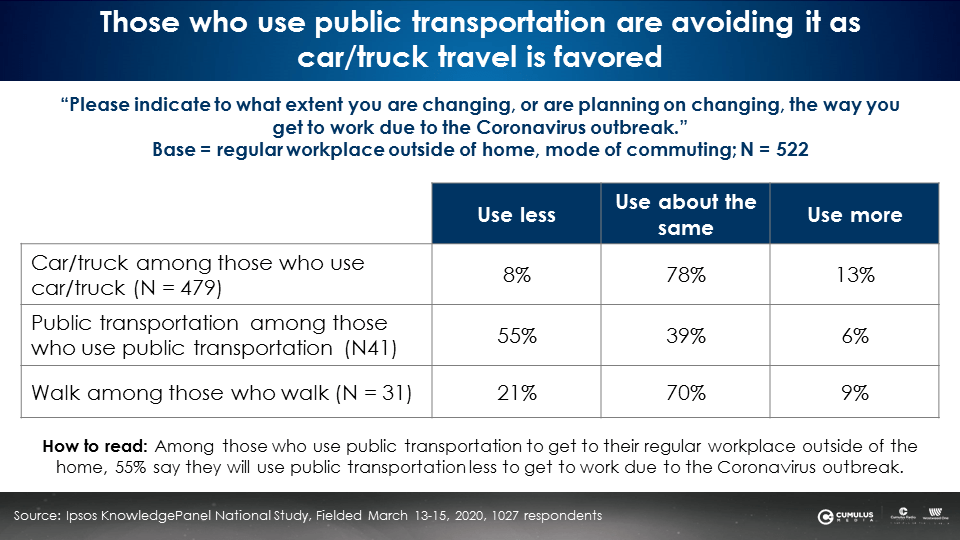
Workers who are staying home typically use public transportation or walk to work; Out of the 77% of workers who are still commuting to work, most are using their car or truck
Among those who say they will work from home the week of March 16-20, 35% typically get to work via public transportation, walking, or using some other means besides a car or truck. Among the 77% of workers who say they will go to work the week of March 16-20, the vast majority (90%) typically use their vehicle.
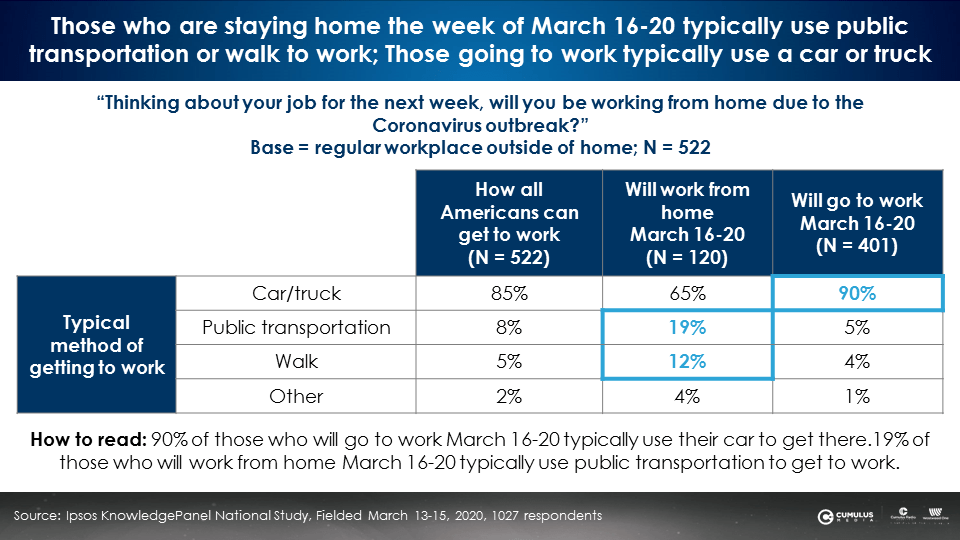
Heavy AM/FM radio listeners say they will listen more to AM/FM radio overall and AM/FM radio news reports
Nearly one in five (18%) heavy AM/FM radio listeners, those who listen to more than 5 hours each week, say they will be listening even more to AM/FM radio due to the Coronavirus outbreak.
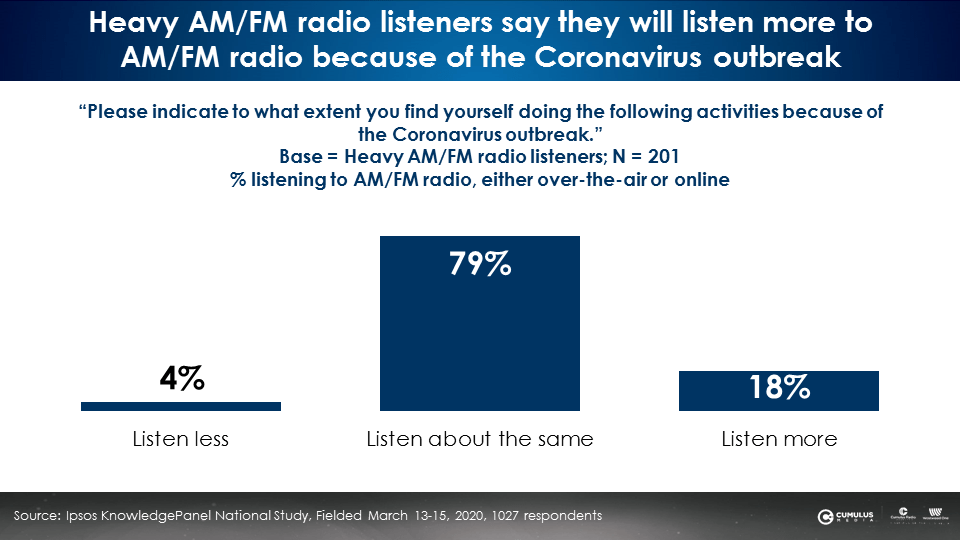
Additionally, 20% of heavy AM/FM radio listeners say they will be listening more to news reports on AM/FM radio. The crisis has also turned many into news fanatics. Nearly one-third say they will be consuming more news online and news on TV.
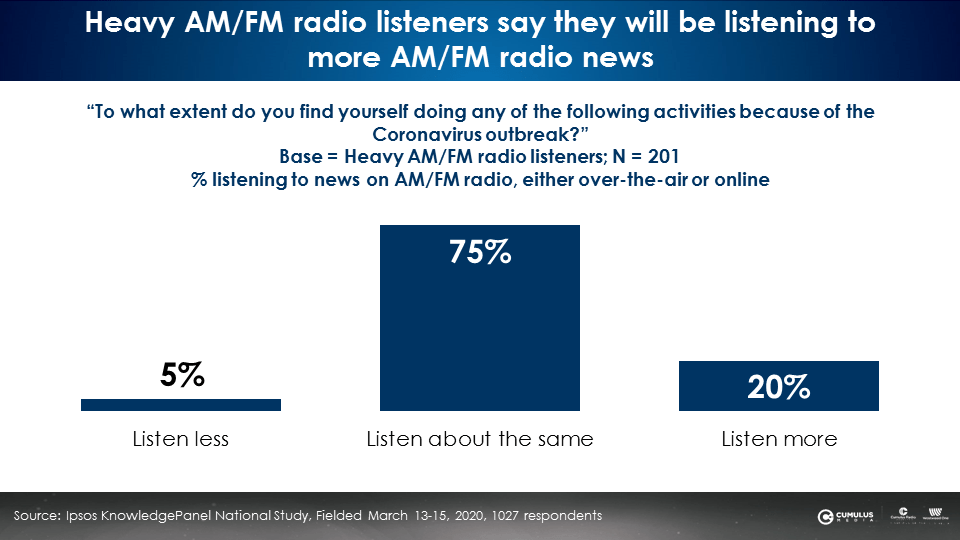
A snapshot in time
While the number of businesses, venues, and locations that have closed or curtailed visitation has grown sharply even since this study was fielded just two days ago, this data serves to quantify the state of the American workforce during a period in time.
Key takeaways:
- As of March 14-15, 11% of those employed outside the home had worked from home in the prior week.
- For the week of March 16-20, 77% of those who worked outside their home said they would go to work; 23% said they intended to work from home.
- The Northeast is pacing ahead of the rest of the country in working from home.
- Commuters are avoiding public transportation.
- Among the 77% of workers who say they will go to work the week of March 16-20, the vast majority (90%) typically use their vehicle.
- Heavy AM/FM radio listeners say they are listening even more, especially to AM/FM radio news.
- The fast-moving crisis is creating news fanatics as nearly one-third say they are spending more time with news on TV and online.
Methodology: The study was conducted online in Ipsos’s Omnibus using the web-enabled “KnowledgePanel,” a probability-based panel designed to be representative of the U.S. general population, not just the online population. The study consisted of 1,027 nationally representative interviews conducted between March 13 -15 among adults aged 18+. The margin of error is +/-3 percentage points.
Pierre Bouvard is Chief Insights Officer at CUMULUS MEDIA | Westwood One.
Doug Hyde is Senior Director, National & Local Insights at CUMULUS MEDIA | Westwood One.
Lauren Vetrano is Director of Content Marketing at CUMULUS MEDIA | Westwood One.
Brittany Faison is the Insights Manager at CUMULUS MEDIA | Westwood One.
Contact the Insights team at CorpMarketing@westwoodone.com.